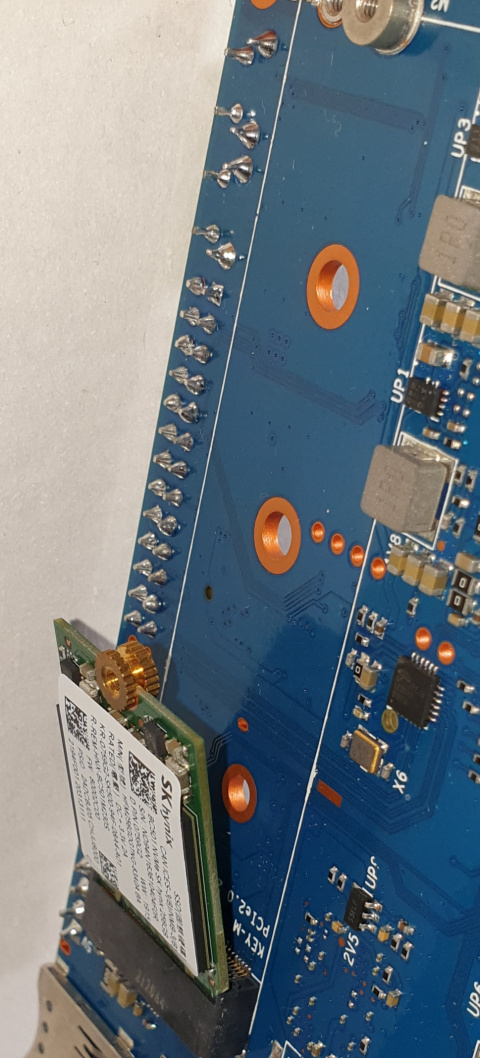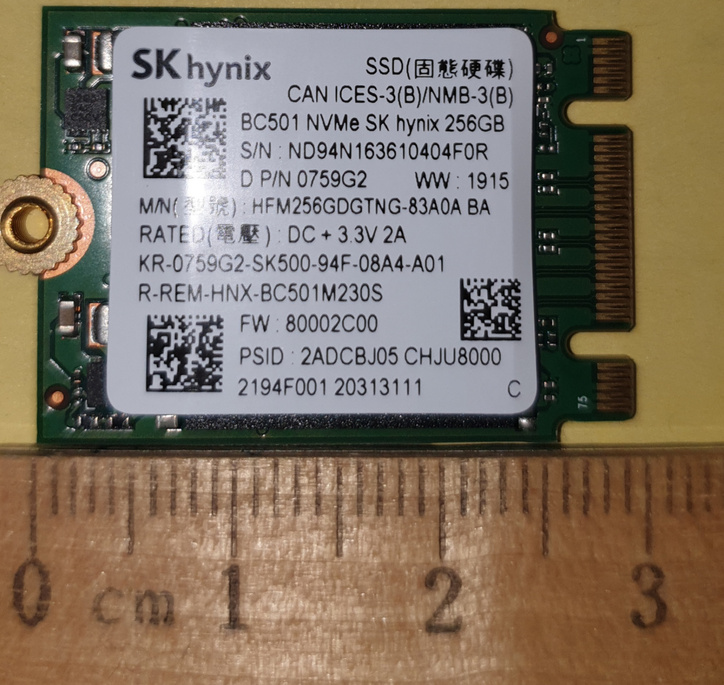I don’t see any SATA ports on the picture. Are they not planned?
And SFP, are they separated from RJ-45 or shared?
I don’t see any SATA ports on the picture. Are they not planned?
And SFP, are they separated from RJ-45 or shared?
Yes SATA ports very important, because USB->SATA adapters work bad.
Great to see that all 4 boot options (SD, eMMC, SPI-NOR, SPI-NAND) are supported, finally I can test a single OpenWrt image for all existing storage backends (block for SD/eMMC, mtd for SPI-NOR, ubi for SPI-NAND).
For now I can test block and ubi on the R64 and have to use UniFi 6 LR as a sample-device with NOR-flash (and hence plain MTD storage, JFFS2 as overlay filesystem, …) to see if U-Boot and single-image approach works there as well.
So I can’t wait to receive a sample!
Also great to hear that 2.5G speeds will be supported on SFP! (btw: both slots up to 2.5G? or only 2nd SFP slot?)
Regarding the mPCIe socket: Does it only have USB2.0? If so, it would have been better to at least put NGFF/M.2 socket with USB2.0 and USB3.x connected because modern 4G/5G modems tend to come in that form factor and 5G speeds will require USB3.x…
You’re right,i see no sata port too,and this is one of key features of bpi boards. And i’m using it in production (r2).
For gmac,moore posted a shematic
1 sfp is connected to switch as port5 and one to gmac2 of soc. Basicly the connection which is hard wired on r2/r64,but p5 of mt753x can be configured as userport. So afaik they are independ.
And maybe you can connect sfp to each other to have same constellation as on r2/r64. @moore can you confirm this? If anyone do this (because of financial and stability aspects) is another story  of course p5 have to be configured as cpu-port again and in case of dsa driver used it have to be support that (currently no second cpu port possible,but workaround with vlan-aware bridge)
of course p5 have to be configured as cpu-port again and in case of dsa driver used it have to be support that (currently no second cpu port possible,but workaround with vlan-aware bridge)
it have M.2 interface ,you can add sata easy. and speed about 20G/s
easy way ,this 

Are there power connector for sata (5v/12v) on board? Or do we need to split dc-in before and using step-down converter for 5v
According to the picture label this board has M.2 Key-E, but the controller has Key-M. Is it a typo on a picture?
Looked a bit around and sata adapters seem to be only available for key B and/or M, not Key-E (which seems to be defined for wifi cards)
https://en.m.wikipedia.org/wiki/M.2 => “Form factors and keying”
M2 SSDs also use B,M or B+M
Are there power connector for sata (5v/12v) on board? Or do we need to split dc-in before and using step-down converter for 5v
12V from fan 5V from USB.
I don’t think taking 12v from fan for hdd is a good idea and 5v from usb also needs a splitter to not block usb port
and the top 2 white connectors are defined as USB, can you please use usb-connectors for it like used on x86 mainboards? so we can attach usb-extensions like this
https://www.ebay.de/itm/190867434242?
or this
https://www.dhgate.com/product/10-pin-9-pin-motherboard-to-2-ports-usb-2/168312691.html
connection sheme is defined here (2 usb-ports on 1 connector):
see usb2 connector here for pinout: https://superuser.com/questions/520734/why-usb3-motherbard-headers-have-so-many-unused-pins
Not fact that fan voltage is 12V it might be a 5V and also it might be PWM.
There is a header right next to the PSU barrel port, and likely it’s directly connected to it. So it might be used as a 12V source. (if the board uses 12V, of course)
sorry , the BPI-R3 is M.2 KEY-M 2lane interface ,it is for M2 SSD inteface .
where could i buy this evb ?
Is there any new state for this board?
For code please start with clean linux fork and add your changes on top. R2pro-repo is very huge because of squashed commits.
mt76 wifi driver now has support for this SoC
What is the capacity of the network accelerator? (HW NAT) On R64 it can handle 1G NAT easily.
10G is becoming more popular, I think a product like R3 but with 10G only ports (at least one SFP+ for fiber) would be amazing. Also instead of the built in wifi chips on board, gives us PCIE ports instead (WIFI 7 is coming) Would such a device be possible in the future?
Either way, R3 looks like a solid product, a very good upgrade over R64.
Did my first steps with bpi-r3,noticed some problems:


Apart of this r3 is a great board
Edit: got response:
If doing new hardware rev imho it is better to move the switches all to top side of the board and maybe replace them by 2.54mm pins +jumper. This will allow moving these switches to somewhere on the case. As install to emmc requires switching multiple times this will be hard if board is inside a case.
I started working OpenWrt support for the R3 and got most things working. Feedback and questions are very welcome!
Edit 2022-09-02: Support for the R3 has landet in mainline OpenWrt. See Banana Pi BPI-R3 OpenWRT image